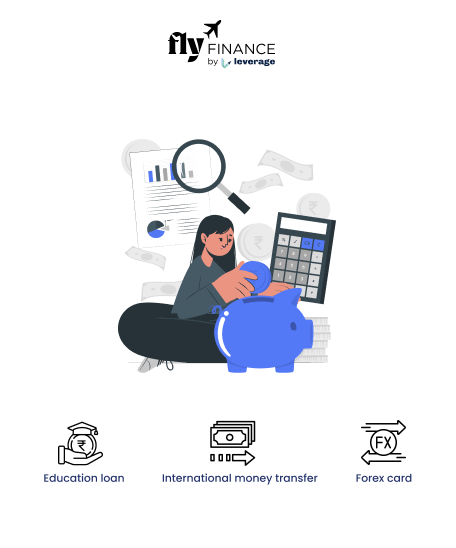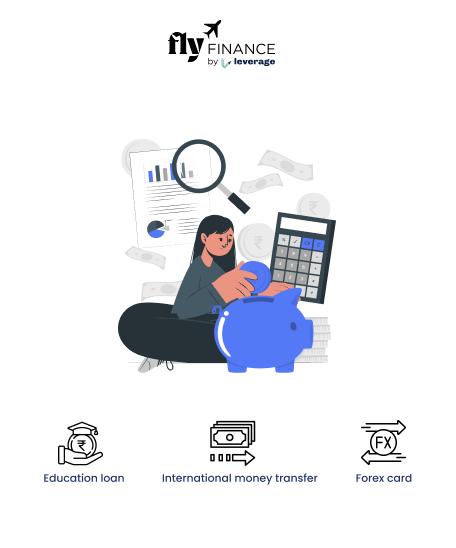Pursuing higher education often comes with significant costs, from tuition fees to living expenses. For many, these expenses can feel overwhelming. Financial aid is vital to bridge this gap, enabling individuals to achieve their academic goals without excessive financial strain. But what does financial aid mean?
This blog explores all about financial aid meaning, its types, benefits, and how it supports educational aspirations. Let’s get started!
This Blog Includes:
What Is Financial Aid Meaning?
Financial aid refers to funding provided to help cover the costs of higher education, making it more accessible. This assistance can come from various sources, including governments, educational institutions, and private organizations.
Understanding the financial aid meaning is crucial for navigating the options available and maximizing support.
- Definition: Financial aid is any form of monetary assistance designed to help pay for college or university expenses, such as tuition, housing, books, and transportation.
- Sources: Includes federal and state governments, colleges, universities, private foundations, and corporations.
- Purpose: Reduces the financial burden of education, ensuring access regardless of economic background.
By grasping the financial aid meaning, individuals can better plan their educational journey and explore available opportunities.
Also Read: Student Loan vs Financial Aid: Difference between Student Loan and Financial Aid
Key Components of Financial Aid
Financial aid encompasses several components, each addressing different needs. These components vary in terms of repayment requirements and eligibility criteria, offering flexibility to recipients.
- Grants: Funds that do not require repayment, often based on financial need (e.g., Pell Grants).
- Scholarships: Awards based on merit, need, or specific criteria, also typically non-repayable.
- Loans: Borrowed funds that must be repaid with interest, often with favourable terms for students.
- Work-Study Programs: Part-time jobs offered by institutions, allowing earnings to cover educational costs.
These components collectively define the financial aid meaning, offering diverse solutions to manage educational expenses.
List of Financial Aid Options in India for Students
Financial aid in India encompasses various schemes designed to support students in covering educational expenses such as tuition, books, and living costs. Below is a curated list of prominent financial aid programs, including scholarships, grants, and loan schemes, to help make higher education accessible.
| Financial Aid Program | Benefits | Eligibility Criteria |
| Central Sector Scheme | INR 10,000–INR 20,000/year | Family income < INR 8 lakh, 80th percentile in Class 12 |
| PM-Vidyalaxmi Scheme | 3% interest subvention, 75% credit guarantee | Family income < INR 8 lakh, loans up to INR 10 lakh |
| AICTE Pragati | INR 50,000/year | Female students, family income < INR 8 lakh |
| AICTE Saksham | INR 50,000/year | Students with disabilities, family income < INR 8 lakh |
| Post-Matric ST Scholarship | Tuition, stipend, hostel charges | ST students in post-matric courses |
| AICTE Swanath | INR 50,000/year | Orphans/COVID-19 affected, family income < INR 8 lakh |
| Maulana Azad Fellowship | Stipend + contingency | Minority students, UGC NET/CSIR NET, 55% PG marks |
| K.C. Mahindra Scholarship | Tuition support | Low-income students in diploma courses |
| FFE Scholarships | Tuition, hostel fees | Family income < INR 2.5 lakh, professional courses |
| Sahu Jain Trust | Tuition support | Class 12 pass-outs, financial need |
| VidyaGyan Program | Full funding | Rural students, family income < INR 2 lakh |
| Minority Education Loan | Low education loan interest rates loans | Minority community students |
Why Financial Aid Meaning Matters
Financial aid plays a pivotal role in making higher education attainable. It alleviates financial stress, enabling focus on academic and career goals. Beyond affordability, it provides opportunities for personal and professional growth.
- Affordability: Covers costs like tuition, accommodation, and supplies, reducing out-of-pocket expenses.
- Access to Opportunities: Enables attendance at prestigious institutions, regardless of financial background.
- Reduced Debt Burden: Grants and scholarships minimise reliance on loans, lowering future debt.
- Career Advancement: Supports skill development, enhancing employability and future earnings.
Financial aid empowers individuals to pursue their dreams without the constant worry of financial constraints.
Long-Term Benefits of Financial Aid
The impact of financial aid extends beyond immediate financial relief. It fosters long-term benefits of education loans that shape academic and professional success.
- Academic Focus: Reduces the need for part-time work, allowing more time for studies.
- Networking Opportunities: Access to internships and industry connections through funded programs.
- Cultural Exposure: Supports study abroad or diverse campus experiences, broadening perspectives.
- Community Contribution: Enables graduates to give back through skills and knowledge gained.
By understanding the financial aid meaning, individuals can leverage these benefits to build a brighter future.
How to Access Financial Aid
Accessing financial aid requires proactive steps, from researching options to completing applications. Knowing the process ensures individuals maximise available support.
- Research Options: Explore grants, scholarships, loans, and work-study programs offered by institutions and governments.
- Complete Applications: Apply online through NSP, AICTE, or specific scheme portals; ensure accuracy to avoid delays.
- Meet Deadlines: Adhere to application timelines, as many programs have strict cutoff dates.
- Seek Guidance: Consult college financial aid offices or high school counsellors for personalised advice.
Taking these steps helps individuals secure the financial aid needed to support their education.
Also Read: 5 Types of Financial Assistance to Fund Your Studies Abroad
Common Misconceptions About Financial Aid
Misunderstandings about financial aid can deter individuals from applying. Addressing these myths clarifies the financial aid meaning and encourages informed decisions.
- Myth: Financial aid is only for low-income individuals.
- Reality: Aid includes merit-based scholarships and loans available to a wide range of applicants.
- Myth: Financial aid covers all expenses.
- Reality: Aid often covers partial costs, requiring budgeting for remaining expenses.
- Myth: Accepting aid reduces future opportunities.
- Reality: Most aid, like grants and scholarships, has no negative impact on future prospects.
Dispelling these misconceptions ensures more individuals take advantage of available financial support.
Financial aid is a cornerstone of accessible education, offering diverse forms of assistance to ease the cost of higher education. By understanding the financial aid meaning, individuals can explore grants, scholarships, loans, and work-study programs to fund their academic journey. This support not only makes education affordable but also opens doors to personal growth, career opportunities, and long-term success.
FAQs on Financial Aid Meaning
Financial aid is monetary assistance provided to help cover the costs of higher education, including tuition, books, housing, and other expenses, making it more accessible to students.
Financial aid includes grants (non-repayable), scholarships (merit or need-based), loans (repayable), and work-study programs (part-time jobs).
Eligibility for financial aid depends on factors like financial need, academic merit, or specific criteria set by institutions, governments, or private organisations.
Grants and scholarships do not require repayment, but loans must be repaid with interest. Work-study earnings are also non-repayable.
Financial aid often covers partial costs, such as tuition or housing, but may require budgeting for additional expenses like personal costs.
A work-study program provides part-time jobs through institutions, allowing students to earn money to help pay for educational expenses.
Yes, scholarships, grants, and loans are available for study abroad or international institutions, often offered by universities or private foundations.
Financial assistance refers to any form of monetary support provided to individuals or organisations to meet specific needs, such as education, healthcare, or emergency relief. In the context of education, it aligns with financial aid, covering costs like tuition and living expenses.
A synonym for financial aid is “financial assistance.” Other related terms include funding, support, or bursary.
Aid refers to any form of help or support provided to address a need or alleviate a problem. In the financial context, it specifically means monetary or resource-based assistance to reduce economic burdens.
An example of financial support for an Indian student pursuing higher studies abroad is the Fulbright-Nehru Master’s Fellowship. This merit- and need-based scholarship, offered by the United States-India Educational Foundation (USIEF), supports Indian students pursuing a master’s degree in the United States.
Financial assistance is provided by governments, colleges and universities, private organizations, foundations, corporations, and nonprofit entities.
To learn more about bank accounts for students, the best education loans, forex, banking experience for global students, or international money transfers, reach out to our experts at 1800572126 to help ease your experience with studying abroad.
Follow Us on Social Media





























